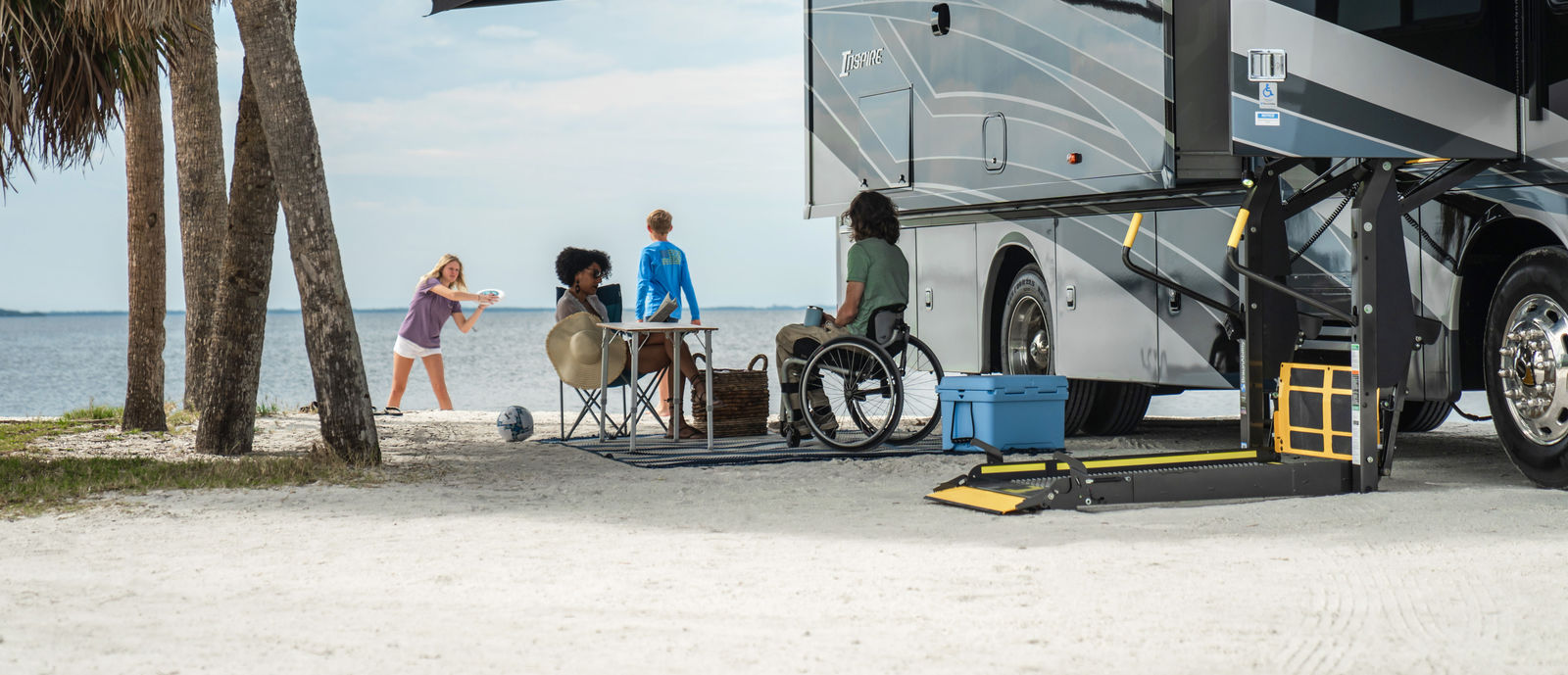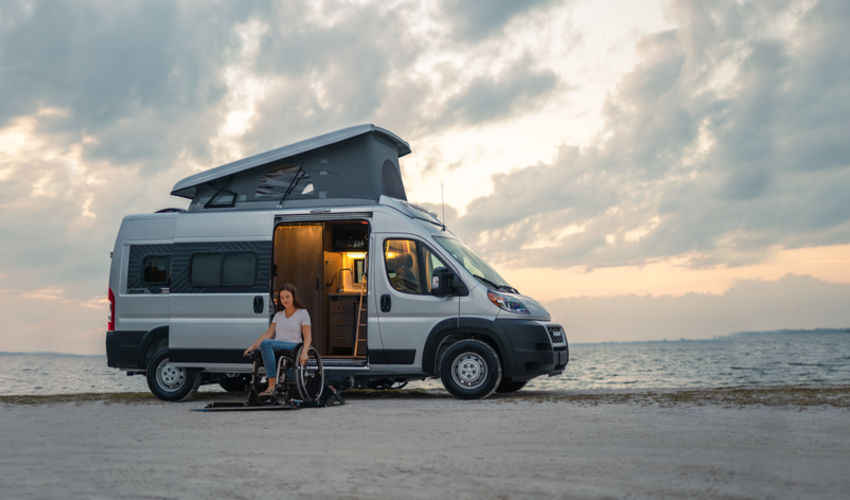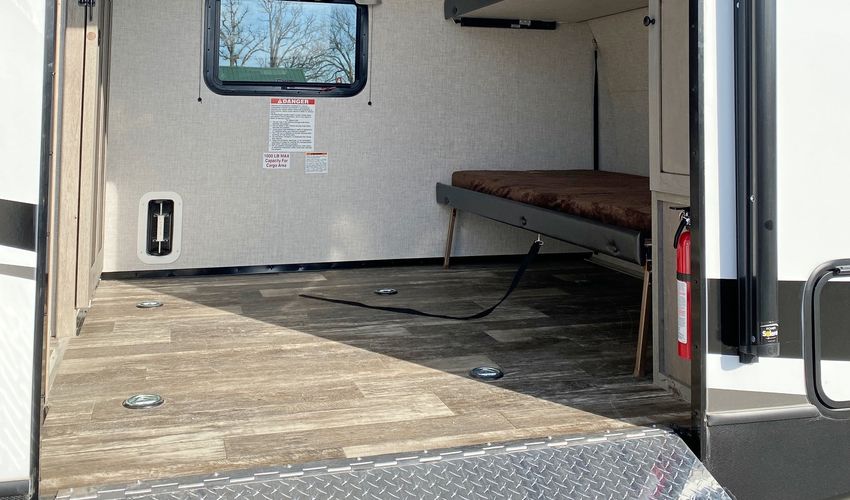

What To Look for in an Accessible RV
Accessible RVs can make RV travel possible for shoppers that need specific accommodations. A properly designed, accessible RV makes it easy for everyone to enjoy adventures in the great outdoors and across the nation.

Accessible RVs make it possible to travel with wheelchairs, refrigerated medications, extra equipment, or additional aids, making the rig safer and more comfortable for travelers with a variety of needs and desires. More than that, they reduce barriers, making it possible for every traveler to have access to the great outdoors and the world beyond.
In recent years, RV manufacturers have become more aware of these needs and are designing RVs with a wide range of features to make them more accessible. Some travelers have gone their own way, retrofitting motorhomes and travel trailers with various modifications for comfort and safety. The terrain is ever changing, with new innovations and accommodations on the horizon.

FAQs about Handicapped-Accessible RVs
To explore the landscape of accessible RVs, consider these questions:
- Is a motorized or towable RV better for travelers with accessibility needs? This is a matter of preference, as accessible models are available in both types. Some motorized RVs offer features to increase driveability, as well as tie-downs to secure wheelchairs while in motion. Towable RVs may allow you to drive a vehicle that already meets your needs while pulling a specially-equipped trailer, toy hauler, or fifth wheel.
- Which type of RVs offer floor plans that are handicapped accessible? A handful of manufacturers offer handicapped-accessible RVs in both motorized and non-motorized rigs. Properly outfitted Class As and Class Cs may offer a roomy layout, while Class B vans may be easier to drive. Towables come in a variety of layouts.
- Do handicapped-accessible RVs cost more? Depending on which features you desire, an accessible RV or after-market modifications may have additional costs for items like ramps and lifts.
- Where can you find accessible RVs? While many RVs offer some level of accessibility, a few manufacturers design specially-equipped models. Look for Newmar’s Mobility Lineup, Winnebago’s Accessibility Enhanced (AE) models in the Roam and Inspire lines, MAXVAN’s Pathway van, and Keystone’s Outback 342CG toy hauler.
- Are accessible RVs available to rent? Some accessible RVs are available on peer-to-peer RV rental networks, and these platforms make it easy to search for accessible models. This is a great way to experience the RV lifestyle while on a budget or to “try it before you buy it” if you are considering making a purchase.

10 Notable Features to Consider in Handicapped-Accessible RVs
What makes an accessible RV notable? These features make an RV more comfortable and convenient for those with a variety of needs and desires:
- Wide doorways: Wheelchair-accessible RVs offer wider doorways to enhance mobility. Both interior and exterior doors are adapted to allow wheelchairs and other equipment to move freely into, through, and out of the RV.
- Wheelchair lift or ramp: Some RVs come equipped with a motorized wheelchair lift or rollable ramp to allow for ease of entry.
- Open floor plans: Open floor plans offer more room for maneuverability for wheelchairs and other equipment, as well as caretaker access.
- Lower countertops: Both kitchens and bathrooms may be outfitted with lower countertops to allow for wheelchair accessibility.
- Accessible bathrooms: Look for roll-in showers, specially adapted toilets, and sturdy grab bars. Roomy bathrooms are easier to navigate with wheelchairs or with caretakers.
- Reachable controls: Standard RVs have buttons and gauges located too high for some travelers to reach. Adapted RVs may offer lower controls, allowing for more independence.
- Adjustable beds: To increase accessibility and comfort, adjustable beds are a popular feature to make RVs more adaptable for a variety of needs. Features can include adjustable heights and electronic bed frames, making it possible to elevate the head or foot of the bed.
- Driveability: Some motorized RVs may come with adapted controls to increase driveability. This may include features like hand controls or adjustable seats.
- Power supplies: Look for ample electric outlets wherever you may need them. This is a common need near beds and in kitchens.
- Emergency power: If electricity is necessary to power medical equipment, consider an RV with a back-up generator or other method to keep electricity flowing.
These features and more can ensure that the RV lifestyle truly is for everyone. Accessible RVs open up the road—and the possibilities for endless RV adventures.






